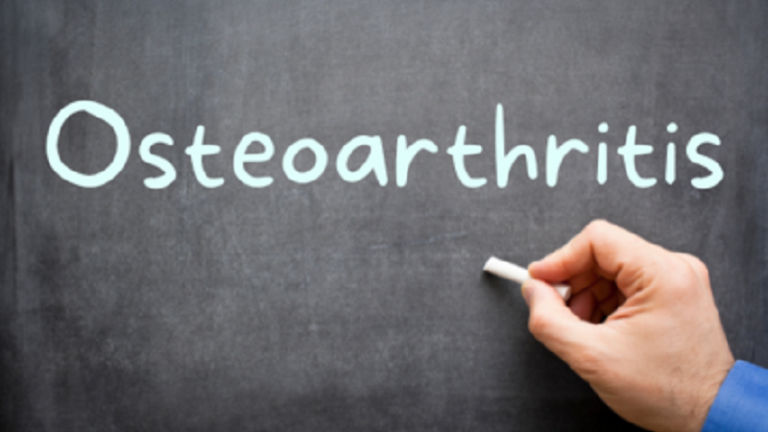
Osteoarthritis is a degenerative joint disease that affects millions of people worldwide, with the knees being one of the most commonly affected areas. It is a condition that occurs when the cartilage that cushions the joints wears down over time, causing pain, stiffness, and loss of function. While there is no cure for osteoarthritis, there are many ways to manage the symptoms and improve quality of life. In this blog, we will discuss patient education on osteoarthritis of knees, including healthy diet, exercises, diagnosis, and treatment.
Healthy Diet for Osteoarthritis of Knees:
A healthy diet is an essential component of managing osteoarthritis of knees. It can help in reducing inflammation and pain associated with osteoarthritis. Some of the key foods to include in the diet are:
1. Omega-3 fatty acids: Omega-3 fatty acids are known for their anti-inflammatory properties. Sources of Omega-3 fatty acids include fatty fish such as salmon, mackerel, and sardines, as well as flaxseeds, chia seeds, and walnuts.
2. Antioxidants: Antioxidants such as vitamin C and E can help in reducing inflammation in the body. Foods high in antioxidants include berries, oranges, kiwi, spinach, broccoli, and nuts.
3. Whole grains: Whole grains are rich in fiber, which can help in managing weight and reducing inflammation. Some of the examples of whole grains are oatmeal, brown rice, whole wheat bread, and quinoa.
4. Calcium and Vitamin D: Adequate intake of calcium and vitamin D is essential for maintaining bone health. Sources of calcium include dairy products, leafy greens, and fortified foods. Vitamin D is found in fatty fish, egg yolks, and fortified foods.
Exercises for Osteoarthritis of Knees:
Exercise is an essential component of managing osteoarthritis of knees. It helps in improving joint mobility, reducing pain and stiffness, and maintaining a healthy weight. Some of the exercises that are beneficial for people with osteoarthritis of knees are:
1. Low-impact aerobic exercises: Low-impact aerobic exercises such as walking, cycling, and swimming can help in improving joint mobility, reducing pain and stiffness, and maintaining a healthy weight.
2. Strengthening exercises: Strengthening exercises such as leg lifts, squats, and lunges can help in strengthening the muscles around the knee joint, providing support to the joint and reducing pain. 3. Range-of-motion exercises: Range-of-motion exercises such as knee bends and leg extensions can help in improving joint mobility and reducing stiffness.
Diagnosis of Osteoarthritis of Knees:
The diagnosis of osteoarthritis of knees involves a physical examination, medical history, and imaging tests such as X-rays or MRIs. During the physical examination, the doctor will check for signs of joint damage, such as swelling, tenderness, and crepitus (crackling sound). They may also ask about symptoms such as pain, stiffness, and loss of function.
Treatment of Osteoarthritis of Knees:
The treatment of osteoarthritis of knees aims to manage the symptoms, improve joint function, and prevent further damage to the joint. Some of the treatment options are:
1. Medications: Over-the-counter pain relievers such as acetaminophen and nonsteroidal anti-inflammatory drugs (NSAIDs) can help in reducing pain and inflammation. Prescription medications such as corticosteroids and hyaluronic acid injections may be recommended in some cases.
2. Physical therapy: Physical therapy can help in improving joint mobility, reducing pain and stiffness, and strengthening the muscles around the knee joint.
3. Weight management: Maintaining a healthy weight is crucial for people with osteoarthritis of knees, as excess weight puts extra stress on the joints. Losing weight through a combination of healthy diet and exercise can help in reducing pain and improving joint function.
4. Assistive devices: Assistive devices such as knee braces, shoe inserts, and canes can provide support to the knee joint and reduce pain.
5. Surgery: In severe cases of osteoarthritis of knees, when conservative treatments have not been effective, surgery such as arthroscopy, osteotomy, or joint replacement may be recommended.
In conclusion, osteoarthritis of knees is a common condition that can cause pain and stiffness, but with the right knowledge and management strategies, individuals can lead a fulfilling life. A healthy diet, regular exercise, proper diagnosis, and appropriate treatment can help in managing the symptoms and improving joint function. If you suspect that you have osteoarthritis of knees or are experiencing symptoms, it is important to consult with a healthcare professional for an accurate diagnosis and personalized treatment plan. Remember, with the right approach, you can effectively manage osteoarthritis and maintain an active and healthy lifestyle.





